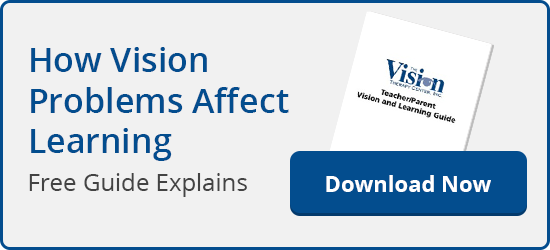
Besides the cosmetic appearance, there are a number of other reasons why parents become stressed about strabismus. Let’s take a closer look the typical short-term and long-term issues involving strabismus, as well as how you can help your child overcome the problem.
Strabismus is a condition where either one or both eyes are turned. The eye(s) can be turned up, down, in or out - it’s not just crossed eyes. The discovery of an eye turn usually is cause for alarm. Here are a number of reasons why this condition can be so troubling to parents:
1. It’s a cosmetic issue. The physical appearance of strabismus is usually the number one concern for a parent. It’s natural to be upset about an eye turn, but know that there are ways to correct the problem.
2. The entire visual system is affected. You may not realize this right now, but the issue of an eye turn is more than cosmetic. If one or both eyes are turned, then the child’s entire visual system will be affected, as their eyes won’t work together. This can affect depth perception, visual tracking, and a number of other skills.
3. Different treatment options may confuse you. We are developmental optometrists, and we believe the key to effectively treating strabismus is through vision therapy. Getting the eyes to work together is a top priority. Other medical practitioners will advise surgery first (here’s why we disagree with that advice), advocating it as the only way to address the cosmetic issue. Unfortunately, this is one of those issues where your ophthalmologist may disagree with your optometrist, and you’ll have to decide which option makes the most sense.
4. Some treatments require invasive procedures. Surgery is one treatment option to correct the cosmetic aspect of an eye turn (which doesn’t address the root cause of strabismus). No parent wants his or her child to undergo surgery.

5. School work, sports and daily life will be affected. The impact of your child’s strabismus will be felt in every aspect of their lives. Because their functional vision system may be affected, they may have trouble with their school work or participating in sports.
6. Finances factor into the treatment. Life sure does cost money, especially if a medical issue is involved. Whether you have insurance to cover your child’s treatment or not, there is always some sort of financial outlay involved. And anything financial can be stressful.
7. You have to make a big decision. At some point, you’ll have to make a decision about the treatment route you’re going to pursue. It’s a big call, no matter how much you research the issue, as every child’s case is different.
That’s a lot to worry about. So how can you deal with the stress of strabismus?
Overcoming the Stress
Dealing with strabismus will not be an easy road. Out of all the stressors listed above, perhaps one of the most difficult ones for parents is sorting through the conflicting medical opinions and trusting your decision.
Our advice is to become as informed on the issue as you can. Be sure you review other sources of information on the condition and learn about the different schools of thought concerning treatment.
The more you know about the true nature of strabismus, and the most effective methods for a cure, the better decision you’ll make. Here are links for several articles that can prove more insight into the condition.
Three Keys to Effective Strabismus Treatment
Quality of Life Declines After Failed Strabismus Surgery
Infantile Strabismus Leads to Vision Therapy - and Results
Four Reasons Why You Should NOT Operate First for Strabismus in Children

